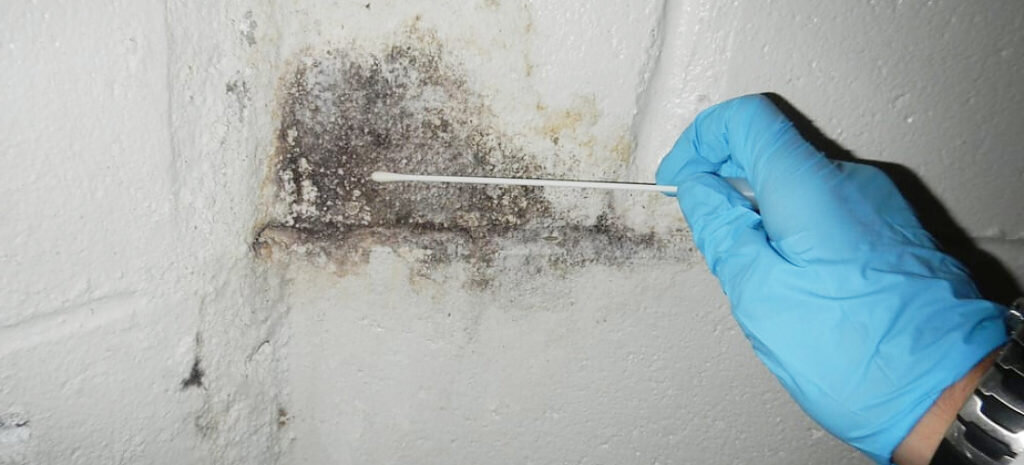After Mold Remediation Approaches for Clean Rooms
After Mold Remediation Approaches for Clean Rooms
Blog Article
Professional Tips for Message Mold And Mildew Removal Success
In the realm of mold remediation, effectively eliminating mold is only half the fight; truth challenge depends on avoiding its reappearance. Post-remediation initiatives play a crucial function in guaranteeing a mold-free environment in the long-term. By sticking to skilled suggestions and best practices, people can safeguard their spaces against mold resurgence and preserve a healthy and balanced indoor environment. It is in this stage of the remediation procedure that attention to detail and positive actions really make a distinction.
Screen Moisture Levels On A Regular Basis
After finishing mold removal treatments, preserving ideal humidity levels is essential to stop mold re-growth and guarantee a healthy and balanced interior atmosphere. High humidity degrees over 60% produce a helpful atmosphere for mold to grow, making normal monitoring an aggressive procedure to stop any kind of future mold and mildew concerns.
Making use of hygrometers or moisture meters can aid in properly measuring moisture levels in various areas of the residential or commercial property. These tools provide real-time information that makes it possible for removal professionals to make educated choices regarding ventilation, dehumidification, and various other needed activities to maintain suitable humidity degrees post-remediation. In addition, establishing a regular timetable for humidity checks, specifically in high-risk locations such as washrooms, basements, and kitchens, is an aggressive method to mold prevention. By continually checking humidity degrees, building proprietors can properly reduce the risk of mold and mildew reoccurrence and keep a healthy and balanced indoor environment post-remediation.
Conduct Thorough Inspections Post-Remediation
Complying with the conclusion of mold removal treatments, it is crucial to perform thorough examinations to verify the efficiency of the remediation procedure. These post-remediation inspections are critical in guaranteeing that the mold issue has been effectively dealt with and that there is no recurrence or continuing to be mold and mildew development. Examinations ought to be accomplished by certified experts who have experience in determining mold and mildew and assessing indoor air top quality.
Throughout these evaluations, various approaches such as aesthetic evaluations, air sampling, and surface sampling may be used to thoroughly evaluate the remediated locations. Aesthetic assessments include an in-depth assessment of the properties to look for any type of visible indicators of mold growth or water damages. Air tasting assists in identifying the airborne mold and mildew spore degrees, while surface area sampling can identify mold and mildew fragments on surfaces.
Implement Appropriate Air Flow Methods
After making certain the effectiveness of the mold and mildew remediation procedure through detailed inspections, the next important step is to focus on carrying out correct air flow techniques. Sufficient air flow is important in preventing mold reoccurrence by regulating wetness degrees and advertising air circulation.
Correct air flow not only aids in stopping mold and mildew development yet additionally adds to the general wellness and convenience of residents. By making sure sufficient ventilation throughout the home, you can reduce the threat of mold regrowth and create a healthier living environment.

Usage Mold-Resistant Materials for Repair Works
To enhance the lasting performance of mold and mildew remediation initiatives, incorporating mold-resistant products for repair work is critical in alleviating the risk of future mold growth. Mold-resistant materials are designed to endure dampness and prevent mold development, making them a necessary selection for areas susceptible to dampness and moisture. When fixing locations influenced by mold and mildew, utilizing materials such as mold-resistant drywall, mold-resistant paints, and mold-resistant caulking can help avoid mold reoccurrence.
Mold-resistant drywall is an excellent alternative to typical drywall in locations like washrooms and cellars where dampness degrees are higher. This kind of drywall has an unique finishing that withstands mold and mildew development also when revealed to damp problems. In addition, using mold-resistant paints containing antimicrobial representatives can further mold remover gel inhibit mold development on ceilings and walls.
In locations where moisture prevails, such as cooking areas and shower rooms, making use of mold-resistant caulking around home windows, tubs, and sinks can aid seal out water and stop mold and mildew from taking hold in cracks and holes. By buying these mold-resistant products throughout repair work post-remediation, you can dramatically decrease the chance of future mold issues and keep a healthier indoor environment.
Maintain Sanitation and Address Water Issues
After mold and mildew removal, it is vital to preserve a tidy setting to protect against the regrowth of mold. Leakages, water intrusion, or high humidity degrees can create the perfect reproduction ground for mold and mildew, so it is necessary to take care remove mold in tile grout of any kind of water-related troubles right away.
To keep tidiness, take into consideration utilizing HEPA filters in vacuums and air purifiers to trap mold spores and stop their blood circulation airborne. In addition, guaranteeing proper ventilation in areas prone to moisture build-up, such as washrooms and kitchens, can assist maintain humidity degrees in check. By staying watchful regarding cleanliness and resolving water issues immediately, you can successfully stop mold reinfestation and keep a healthy and balanced interior environment.
Conclusion

In the world of mold remediation, efficiently eradicating mold and mildew is only half the fight; the true difficulty lies in preventing its reappearance. After finishing mold remediation procedures, preserving optimal moisture degrees is important to stop mold and mildew re-growth and ensure a healthy and balanced indoor environment. High moisture degrees over 60% develop a conducive atmosphere for mold and mildew to grow, making regular checking a proactive procedure to prevent any kind of future mold issues.
To boost the long-lasting effectiveness of mold and mildew remediation initiatives, incorporating mold-resistant materials for repair work is essential in reducing the danger of future browse around here mold and mildew growth. After mold and mildew removal, it is essential to keep a clean setting to prevent the regrowth of mold.
Report this page